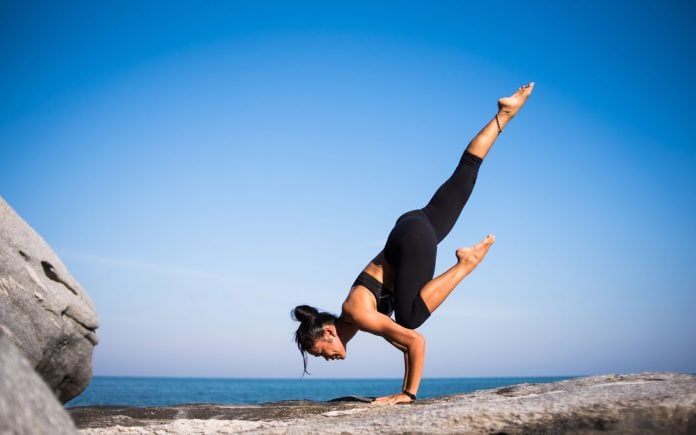Exercising is very important for your health. Irrespective of the weather conditions, you should work out, but take some caution when the weather is extreme—too cold or too hot. So, is it healthy to work out in very hot conditions? What are the benefits and risks of exercising in really hot conditions? What precautions can you take? Well, this article seeks to shed light on those issues.
Benefits of exercising in hot conditions
1. You will surely sweat
There is no doubt that you will sweat, which is a benefit if you intend to do so. Sweating has several benefits for your body, including removing toxins, enhancing cardiovascular health and efficiency, and unclogging your pores.
2. Improved stress management
Although not yet fully proven, working out in the heat is associated with more endorphins (the feel-good hormones), thus helping you better manage stress.
3. Muscles warm up faster
Undoubtedly, higher temperatures will make your blood move more rapidly, thereby warming your muscles.
4. Greater fat loss
Higher temperatures assist in heating the body, making the fat easier to carry in the blood and more available for burning.
5. Training in higher temperatures can enhance the performance of athletes in lower temperatures
A study at the University of Oregon led to the conclusion that heat acclimation boosts the body’s capacity to regulate body temperature, enhances sweating and movement of blood through the skin, and expands the blood volume; thus, the heart pumps more blood to the muscles, organs, and skin as required. The study that involved cyclists showed their performance improved by 7% after just 10 heat exposures.
Regarding enhancing your performance, you can also do so by incorporating steroids from Valkyrie Online in your training. These steroids will enhance muscle strength, speed up recovery after workouts, improve red blood cell circulation, and improve the use of testosterone.
The risks of heat training
Although working out in heat brings some exceptional benefits with regards to exercises and performance, there are some risks associated with it. Some of the dangers include:
1. Higher cardiovascular workload
When it is hot, the body temperature rises past the ordinary levels for average temperature exercise, necessitating more blood flow to the skin to cool the body. Since the sweat does not evaporates faster (to cool the body), the workload is greater. With less blood available to go to the muscles, the heart is compelled to work harder, thus putting pressure on it.
2. Heat cramps
These are painful muscle contractions, usually in the calves, abdominal muscles and quadriceps, that occur due to less blood flow to the muscles as a result of high body temperatures.
3. Heat exhaustion
Body temperatures go to abnormal levels—about 104 degrees—which creates other symptoms, like dizziness, nausea, headache, vomiting, feebleness, and fainting, among others. If left unattended, heat exhaustion can result in heat stroke.
4. Heat stroke
Body temperature exceeds 104 degrees, necessitating immediate action, or else the victim can easily die or suffer from organ failure or brain destruction.
Telltale signs of heat-related conditions or sicknesses
You need to be on the lookout for the following signs that may indicate suffering from excess heat:
- Dizziness
- Confusion
- Nausea or vomiting
- Muscle cramps
- Headache
- Frailty
If you notice the above signs, stop working out, cool down, and evaluate your workout session in light of the possible risks.
How to get the benefits and avoid the risks of exercising in the heat
It is possible to enjoy the benefits of exercising in hot conditions and to reduce the risks. Here are some things to help you:
1. Be aware of the temperatures
You need to be conscious of the weather forecasts and the anticipated temperatures. When temperatures exceed 100 indices, you need to be more cautious when you exercise, for example by lessening your intensity or training for a shorter duration.
2. Avoid the hours when temperatures are high
You need to avoid exercising at midday when it’s the hottest time, and instead do so in the morning or evening. Also, you can go for a swim if you want to train at midday.
3. Stick to your limits
High-temperature conditions are not the best to get back to training after a hiatus or to increase your intensity. You should also stick to the activities for which you know your limits, as they are crucial in hot conditions.
4. Allow yourself enough time to acclimate and adjust
You should raise the intensity of your workout gradually, for example, in 1 to 3 weeks. If you have been exercising in weather-controlled conditions, start with a shorter session (at most 30 minutes) in higher temperatures, and adjust from there.
5. Dress appropriately
Wear light, loose, and brightly colored clothes, and a hat/cap if you are bald, cleanly shaven, or have thin hair.
6. Explore alternative options
You may consider working out in air-conditioned facilities, like climbing stairs or exercising indoors. Wait for the weather to be friendly to work out outdoors.


